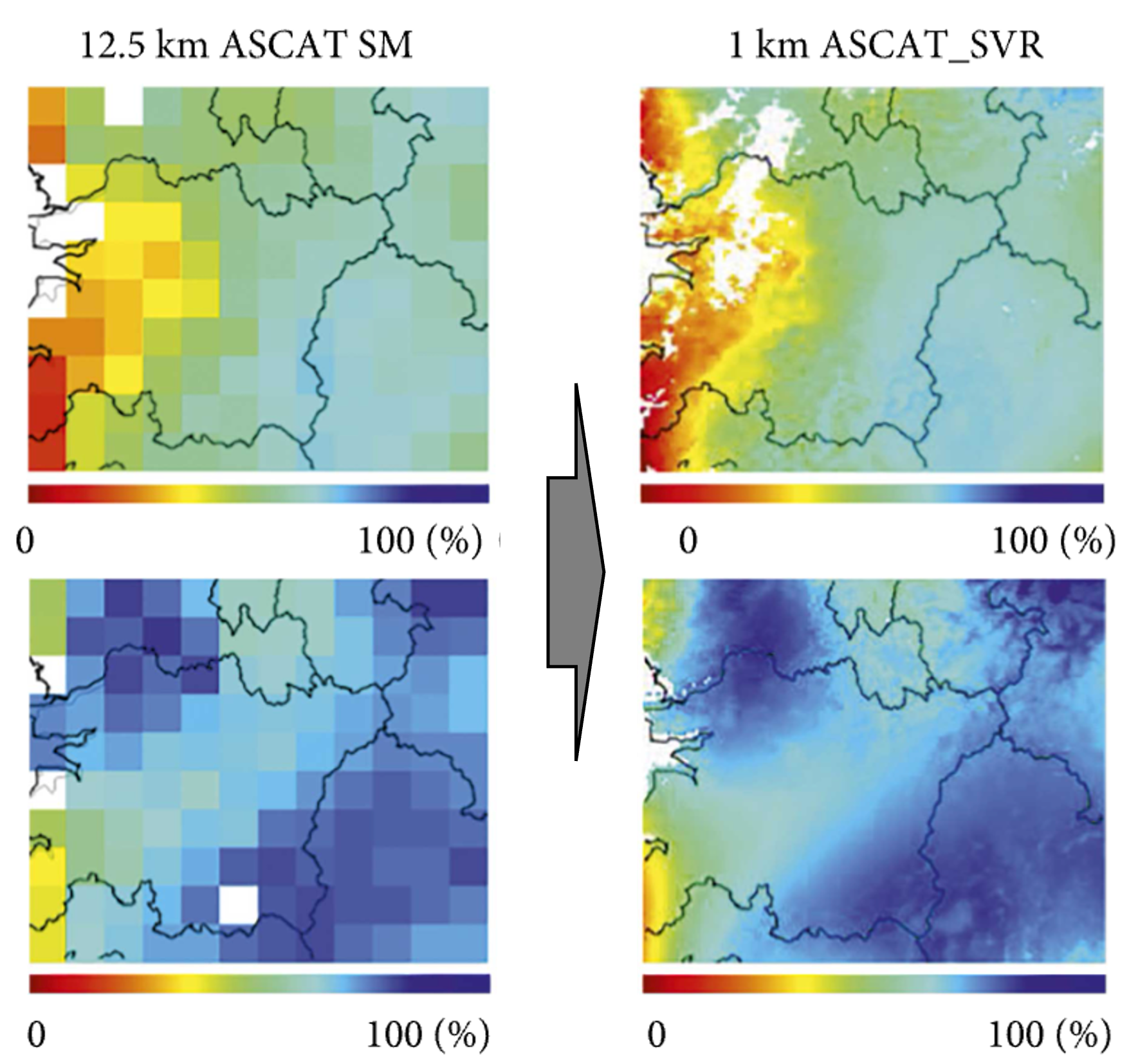Publications
Check our peer-reviewed journal papers and conference papers.

Global dynamics of stored precipitation water in the topsoil layer from satellite and reanalysis data
Water Resources Research
This study explores the amount of precipitation stored in the topsoil layer (0-10 cm) across different vegetation and aridity indices on a global scale. The study uses data from four satellites and two reanalysis data sets to investigate spatial trends of stored precipitation. The study finds that drier and less vegetated soil retains more precipitation in the top layer of the soil, while wet and forested areas have a lower retention rate due to large runoff fluxes and plants intercepting water. Specifically, the topsoil retains 37% ± 11% of precipitated water three days after a rainfall event where the aridity index was greater than 5, while wet and forested areas retain 21% ± 2%. The study also conducts a sensitivity analysis of different sampling frequency values using modeled data sets to calculate the stored precipitation fraction metric. Overall, the study highlights the importance of understanding the spatial trends of stored precipitation in the topsoil layer for better land-atmosphere interactions.

Use of cyclone global navigation satellite system (CyGNSS) observations for estimation of soil moisture
Geophysical Research Letters
Accurate climate forecasting affects our daily lives. Large-scale farmers depend on weather forecasts to decide when to plant their crops. Bad timing can impact the whole years' harvest and thus the farmers' livelihoods. Even more importantly, people who live in floodplains and hurricane zones trust their lives to accurate weather forecasts. For these reasons and more, hydrologists need up-to-date knowledge of Earth's climate systems. And one of the most important sources of data may surprise you. The amount of moisture in just the first 8 mm of topsoil affects all of Earth's climate systems. Currently, National Aeronautics and Space Administration keeps track of soil moisture levels with a satellite called Soil Moisture Active Passive. However, it only provides soil moisture data every 2–3 days. We believe that we can do better, and we believe that we can do it with preexisting satellite systems. In 2017, National Aeronautics and Space Administration (NASA) launched eight microsatellites, called Cyclone Global Navigation Satellite System (CyGNSS), to predict cyclone paths. We have found that while the CyGNSS satellites are predicting cyclone paths, they can simultaneously measure changes in soil moisture around 5 times per day. Augmenting the Soil Moisture Active Passive data with CyGNSS would give us detailed prediction of weather changes in near-real time, protecting livelihoods and lives.

Previous publication list (2015-2019)
Various Journals
Check my Google Scholar Link below.


